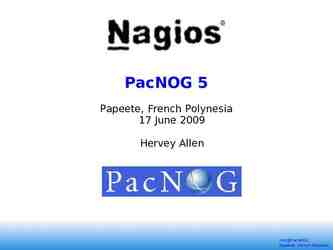EMTM 553: E-commerce Systems Lecture 7: Implementing Security Insup
40 Slides2.04 MB
EMTM 553: E-commerce Systems Lecture 7: Implementing Security Insup Lee Department of Computer and Information Science University of Pennsylvania [email protected] www.cis.upenn.edu/ lee 5/4/00 EMTM 553 1
Protecting Electronic Commerce Assets You cannot hope to produce secure commerce systems unless there is a written security policy – – – – 5/4/00 What assets are to be protected What is needed to protect those assets Analysis of the likelihood of threats Rules to be enforced to protect those assets EMTM 553 2
Protecting Electronic Commerce Assets Both defense and commercial security guidelines state that you must protect assets from – Unauthorized disclosure – Modification – Destruction Typical security policy concerning confidential company information – Do not reveal company confidential information to anyone outside the company 5/4/00 EMTM 553 3
Minimum Requirements for Secure Electronic Commerce Figure 6-1 5/4/00 EMTM 553 4
Protecting Intellectual Property The dilemma for digital property is how to display and make available intellectual property on the Web while protecting those copyrighted works 5/4/00 EMTM 553 5
Companies Providing Intellectual Property Protection Software ARIS Technologies (part of verance.com) – Digital audio watermarking systems o Embedded code in audio file uniquely identifying the intellectual property Digimarc Corporation – Watermarking for various file formats – Controls software and playback devices 5/4/00 EMTM 553 6
Companies Providing Intellectual Property Protection Software SoftLock Services – Allows authors and publishers to lock files containing digital information for sale on the Web – Posts files to the Web that must be unlocked with a purchased ‘key’ before viewing Digitalgoods.com – infrastructure and integrated services necessary to securely market and distribute multimedia digital content to its maximum audience 5/4/00 EMTM 553 7
Protecting Client Computers Active content, delivered over the Internet in dynamic Web pages, can be one of the most serious threats to client computers Threats can hide in – Web pages – Downloaded graphics and plug-ins – E-mail attachments Misplaced trust – Web sites that aren’t really what they seem and trick the user into revealing sensitive data 5/4/00 EMTM 553 8
Protecting Client Privacy Cookies – Small pieces of text stored on your computer and contain sensitive information that is not encrypted – Anyone can read and interpret cookie data – Do not harm client machines directly, but potentially could still cause damage – Two types: session cookie and persistent cookie 5/4/00 EMTM 553 9
Dealing with Cookies Can be set to expire within 10, 20, or 30 days Retrievable only by the site that created them Collect information so that the user doesn’t have to continually enter usernames and passwords to access Web sites Earlier browsers simply stored cookies without comment Today’s browsers allow the user to – Store cookies without permission or warning – Receive a warning that a cookie is about to be stored – Unconditionally disallow cookies altogether 5/4/00 EMTM 553 10
Monitoring Active Content Netscape Navigator and Microsoft Internet Explorer browsers are equipped to allow the user to monitor active content before allowing it to download Digital certificates provide assurance to clients and servers that the participant is authenticated 5/4/00 EMTM 553 11
Digital Certificates Also known as a digital ID An attachment to an e-mail message Embedded in a Web page Serves as proof that the holder is the person or company identified by the certificate Encoded so that others cannot read or duplicate it Ex: visit www.amazon.com and click on a padlock 5/4/00 EMTM 553 12
VeriSign Oldest and best-known Certification Authority (CA) Offers several classes of certificates – Class 1 (lowest level) o Bind e-mail address and associated public keys – Class 4 (highest level) o Apply to servers and their organizations o Offers assurance of an individual’s identity and relationship to a specified organization Visit www.verisign.com 5/4/00 EMTM 553 13
Structure of a VeriSign Certificate Figure 6-4 5/4/00 EMTM 553 14
Microsoft Internet Explorer Provides client-side protection right inside the browser Reacts to ActiveX and Java-based content Authenticode verifies the identity of downloaded content The user decides to ‘trust’ code from individual companies 5/4/00 EMTM 553 15
Security Warning and Certificate Validation Figure 6-5 5/4/00 EMTM 553 16
Internet Explorer Zones and Security Levels Figure 6-6 5/4/00 EMTM 553 17
Internet Explorer Security Zone Default Settings Figure 6-7 5/4/00 EMTM 553 18
Netscape Navigator User can decide to allow Navigator to download active content User can view the signature attached to Java and JavaSript Security is set in the Preferences dialog box Cookie options are also set in the Preferences dialog box 5/4/00 EMTM 553 19
Setting Netscape Navigator Preferences Figure 6-8 5/4/00 EMTM 553 20
A Typical Netscape Navigator Java Security Alert Figure 6-9 5/4/00 EMTM 553 21
Viewing a Content Provider’s Certificate Figure 6-10 5/4/00 EMTM 553 22
Protecting Electronic Commerce Channels Protecting assets while they are in transit between client computers and remote servers Providing channel security includes – – – – Channel secrecy Guaranteeing message integrity Ensuring channel availability Authentication Cannot prevent eavesdropping through snooping in general 5/4/00 EMTM 553 23
Providing Transaction Privacy Encryption – The coding of information by using a mathematically based program and secret key to produce unintelligible characters – Steganography o Makes text invisible to the naked eye – Cryptography o Converts text to strings that appear to have no meaning 5/4/00 EMTM 553 24
Encryption 40-bit keys are considered minimal,128-bit keys provide much more secure encryption Encryption can be subdivided into three functions – Hash Coding o Calculates a number from any length string – Asymmetric (Public-key) Encryption o Encodes by using two mathematically related keys – Symmetric (Private-key) Encryption o Encodes by using one key, both sender and receiver must know 5/4/00 EMTM 553 25
Hash Coding, Private-key, and Public-key Encryption Figure 6-11 5/4/00 EMTM 553 26
Significant Encryption Algorithms and Standards Figure 6-12 5/4/00 EMTM 553 27
Secure Sockets Layer (SSL) Protocol Developed by Netscape Communications Secures connections between two computers Provides a security handshake in which the client and server computers exchange the level of security to be used, certificates, among other things Secures many different types of communications between computers 5/4/00 EMTM 553 28
Secure Sockets Layer (SSL) Protocol Provides either 40-bit or 128-bit encryption Session keys are used to create the cipher text from plain text during the session The longer the key, the more resistant to attack Protocol is called https – Ex: www.amazon.com 5/4/00 EMTM 553 29
SSL Handshake The SSL handshake consists of nine steps that authenticate the shared 5/4/00two parties and create aEMTM 553 session key. [Stein] 30
SSL Web Server Information Figure 6-14 5/4/00 EMTM 553 31
Secure HTTP (S-HTTP) Protocol Developed by CommerceNet Consortium Extension to HTTP that provides numerous security features – Client and server authentication – Spontaneous encryption – Request/response nonrepudiation Provides symmetric and public-key encryption, and message digests (summaries of messages as integers) Whereas SSL is designed to establish a secure connection between two computers, S-HTTP is designed to send individual messages securely. 5/4/00 EMTM 553 32
Ensuring Transaction Integrity Figure 6-15 5/4/00 EMTM 553 33
Guaranteeing Transaction Delivery Neither encryption nor digital signatures protect packets from theft or slowdown Transmission Control Protocol (TCP) is responsible for end-to-end control of packets TCP requests that the client computer resend data when packets appear to be missing 5/4/00 EMTM 553 34
Protecting the Commerce Server Access control and authentication – Controlling who and what has access to the server – Requests that the client send a certificate as part of authentication – Server checks the timestamp on the certificate to ensure that it hasn’t expired – Can use a callback system in which the client computer address and name are checked against a list 5/4/00 EMTM 553 35
Protecting the Commerce Server Usernames and passwords are the most common method of providing protection for the server Usernames are stored in clear text, while passwords are encrypted The password entered by the user is encrypted and compared to the one on file 5/4/00 EMTM 553 36
Logging On With A Username And Password Figure 6-16 5/4/00 EMTM 553 37
Operating System Controls Most operating systems employ username and password authentication A common defense is a firewall – All traffic from inside to outside and outside to inside must pass through it – Only authorized traffic is allowed – The firewall itself must be immune to penetration 5/4/00 EMTM 553 38
Traffic Cop Internet Firewalls Site 1 ftp : 21 Site 2 OSI Application Presentation Session Transport 1 ftp: 2 23 : t e teln :2 p t m s 5 Network Data Link Physical 5/4/00 80 : p t t h EMTM 553 39
Check Point Software’s Firewall-1 Web Page Figure 6-17 5/4/00 EMTM 553 40













































